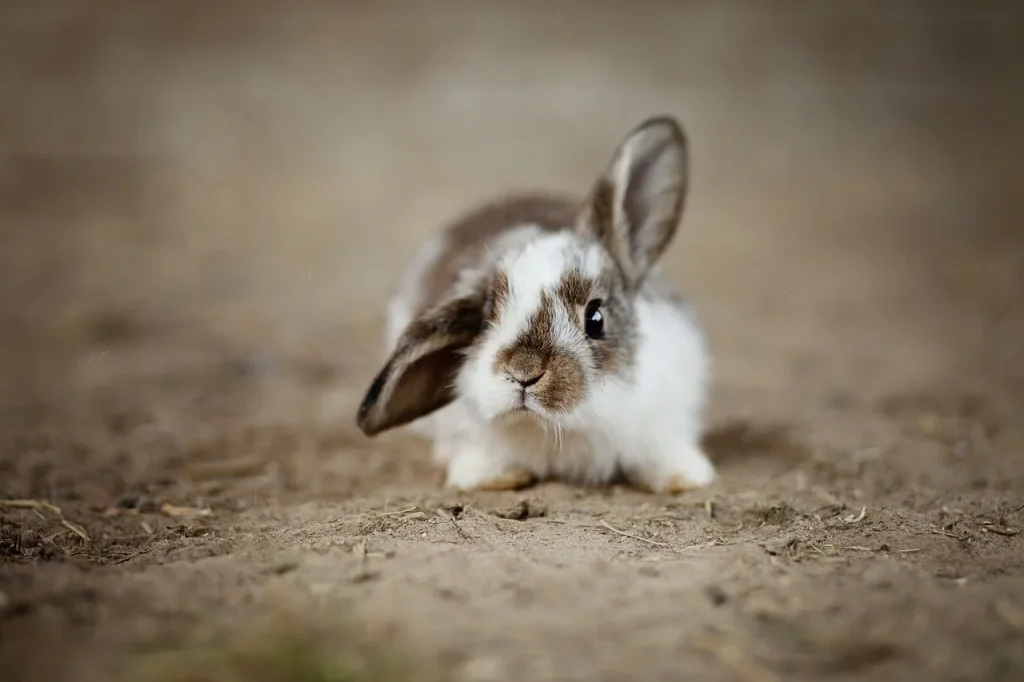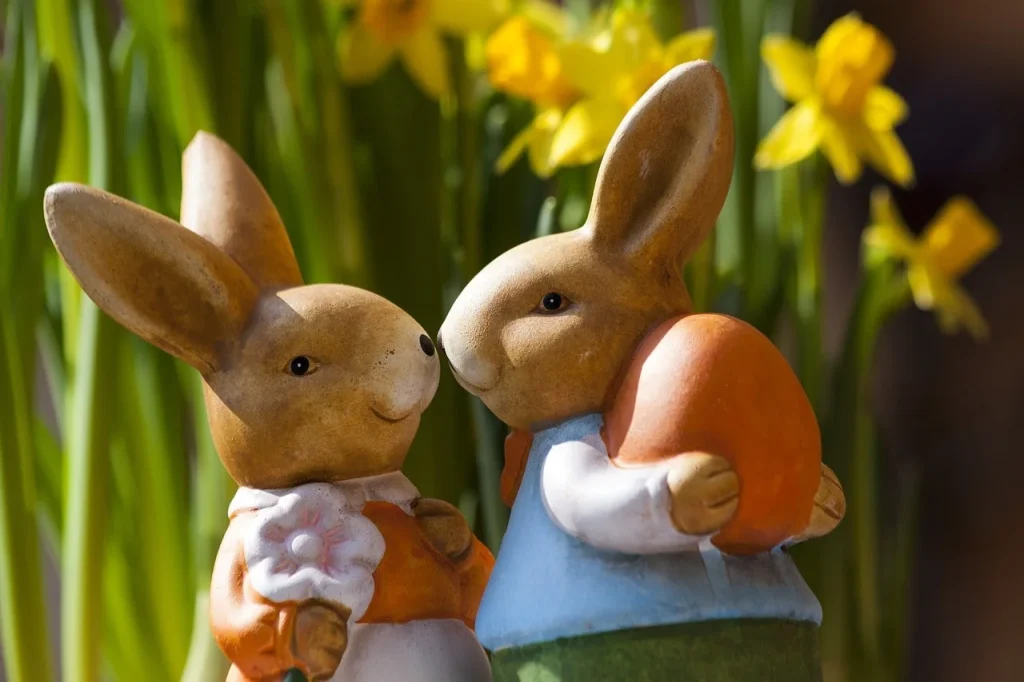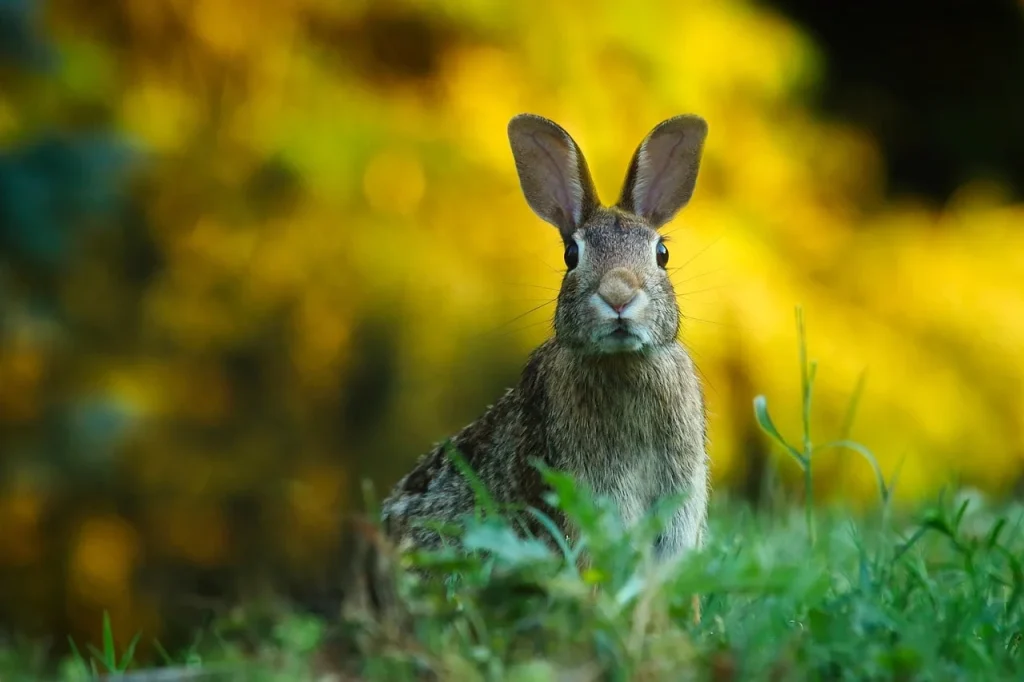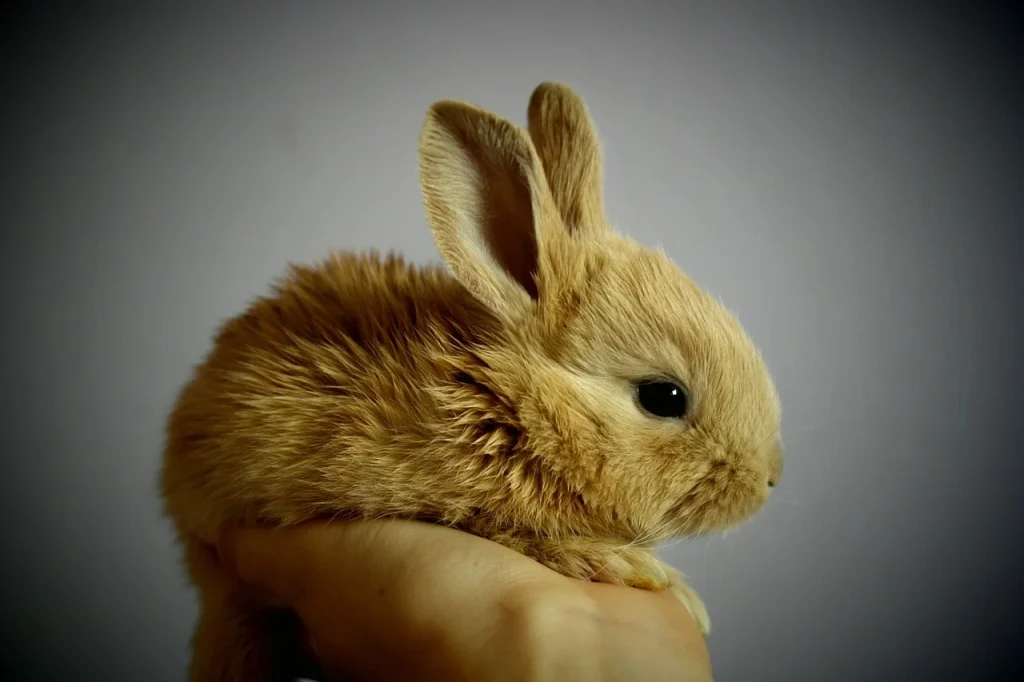Let’s talk about rabbits! These charming critters are known for their speedy hopping and long ears, but there’s so much more to them.
In this article, we’ll uncover some interesting facts about rabbits that will leave you hopping with excitement. From their playful behaviors to their survival instincts, we’ve got the scoop on all things bunny.
And yes, their love for carrots is not just a cartoon myth! Ready to jump in and learn something new about your furry friends?
If you chase two rabbits, you will not catch either one.
Russian Proverb
Rabbit Facts
Welcome to our guide on rabbits! Remember to pay close attention to the details of these cuddly creatures. Test your knowledge with our quiz at the end of the page and prove yourself a true rabbit expert.
- Despite their reputation for being prolific breeders, some species only give birth once a year.
- Their teeth never stop growing, requiring constant wear down through chewing.
- These animals can see behind them without turning their heads.
- The largest species, the Flemish Giant, can weigh more than 20 pounds.
- A baby is born blind and without fur.
- Their ears can reach lengths of up to 10 centimeters, which helps regulate their body temperature.
- Contrary to popular belief, they are poor candidates for desert environments as they can’t sweat.
- They have a unique digestive system that allows them to process fibrous vegetation efficiently.
- These animals can jump up to one meter high and three meters far.
- More than half of the world’s population resides in North America.
- Their lifespan can be as long as 12 years in captivity.
- Crepuscular by nature, they are most active during twilight hours.
- The young can regulate their body temperature at just one week old.

- They have 360-degree panoramic vision, excluding a small blind spot at the bridge of the nose.
- Muscles in their legs are so strong that they must hop to move.
- They consume their own droppings to absorb nutrients effectively.
- A sign of affection is when they softly grind their teeth.
- Their preference for cooler temperatures explains their nocturnal feeding habits.
- Nerves in their whiskers can detect slight changes in their surroundings.
- Their fur thickness can change dramatically with the seasons.
- When happy, they can perform a jump twist in the air, a move called a “binky“.
- Recognizing each other by voice is a common trait.
- They have a complex social structure and can live in large groups called colonies.
- Their hind feet have no pad, just fur.
- Quiet by nature, they rarely make loud noises unless alarmed or in distress.
- Capable of learning through reward-based training techniques, much like dogs.
- They use more than 100 distinct vocalizations to communicate.
- Their spinal structure makes them particularly susceptible to injury if handled improperly.

- Their peripheral vision is excellent, but they have poorer depth perception.
- Capable of incredibly quiet movement, they can navigate their environments stealthily.
- Their color vision is limited compared to humans.
- These animals can recognize themselves in a mirror, a sign of higher intelligence.
- They prefer a variety of foods in their diet, contrary to the myth that they eat only carrots.
- Their paws lack pads, but have very strong claws for digging.
- They are used as symbols of fertility and rebirth in many cultures.
- Wild populations can carry various diseases that are transmissible to domestic species.
- Their night vision is exceptionally good, aiding their nocturnal habits.
- Keen smell and hearing are essential for their survival in the wild.

- Maternal females can build nests using their own fur for insulation.
- Scent glands under their chin allow them to mark their territory.
- Their emotional state can affect their digestive health, leading to conditions like GI stasis.
- Their breeding season can provoke increased territoriality and aggression.
- They occasionally practice a form of play involving toys and objects.
- They can become depressed and exhibit less interest in food or interaction if lonely or bored.
- The velveteen rabbit, a famous literary character, has contributed to the popularity of the animal as a pet.
- Wool from some species is highly prized for its softness and is used in high-end fashion.
- They are capable of swimming if necessary, although it’s not a preferred activity.
- Their gestation period is typically only about 30 days, one of the shortest among mammals.
- Feeding them iceberg lettuce can be harmful due to the low nutritional value and high water content.
- Their whiskers are roughly as wide as their bodies, allowing them to gauge whether they can fit through tight spaces.
Rabbit Myths

Now that we’ve explored the facts, let’s continue with some common myths. It’s time to separate the truth from fiction and shed light on these often misunderstood creatures.
- Rabbits Can Be Fed a Diet Mainly of Carrots
Carrots should only be given as treats. Rabbits require a diet primarily composed of hay, which ensures proper digestion and teeth health. Excessive carrot consumption can lead to sugar imbalances and digestive issues. - Rabbits are Low-Maintenance Pets
They require significant care and attention. Their enclosures must be cleaned regularly, and they need daily exercise and mental stimulation. Veterinary care, which includes regular check-ups, is also essential for their well-being. - Rabbits Don’t Need Social Interaction
Social interaction is highly valued by rabbits. They are often happier and healthier when kept with other compatible rabbits or when frequent human interaction is provided. Loneliness can be suffered from when they are isolated. - Rabbits Only Live a Few Years
When properly cared for, they can live 8 to 12 years, sometimes longer. They are a long-term commitment, and their lifespan is comparable to that of some breeds of dogs. - Rabbits Are Perfect Pets for Small Children
The handling of rabbits must be done gently and with care, which can be challenging for small children. Rabbits can become frightened or injured if handled roughly. Adult supervision is recommended to ensure the safety and comfort of both the child and the rabbit.
No products found.
Rabbit Quotes

Prepare to be surprised by the wisdom these seemingly simple creatures inspire. Below, you will find a list of my favorite quotes about them. Feel free to share yours in the comments so I can add them to the list as well.
When a man has learned within his heart what fear and trembling mean, he is safeguarded against any terror produced by outside influences.
Isaac Bashevis Singer
Isaac Bashevis Singer uses the metaphor of a frightened rabbit to illustrate how inner understanding of fear can protect from external scares.
Ideas are like rabbits. You get a couple and learn how to handle them, and pretty soon you have a dozen.
John Steinbeck
John Steinbeck creatively compares the multiplication of ideas to the rapid breeding habits of rabbits, suggesting that creativity breeds more creativity.
Rabbits are gentle, quiet creatures who mind their own business.
E.B. White
E.B. White describes rabbits as unobtrusive and peaceful animals, highlighting their docile nature in his observation.
My favorite animal is the rabbit, because the rabbit is soft and easy to kill.
Amy Sedaris
Amy Sedaris offers a darkly humorous take, contrasting the rabbit’s gentle nature with its vulnerability, which she finds ironically endearing.
A lion does not concern himself with the opinion of sheep.
George R.R. Martin
Although primarily about lions and sheep, this George R.R. Martin quote can apply to any gentle creature, like rabbits, illustrating the irrelevance of weaker opinions to the powerful.
Rabbit FAQ

We’ve hopped through some charming quotes, and now we’re at the final stretch before the quiz. Pay close attention to this FAQ section, as it will sharpen your understanding and prepare you for what’s next.
- Are rabbits carnivores?
No, they are not carnivores. They are herbivores, which means they primarily eat plants. Their diet mainly consists of hay, fresh vegetables, and a small amount of pellets. - Can rabbits eat apples?
Yes, they can eat apples, but they should be given as a treat in moderation. It’s important to remove the seeds and core first, as they can be harmful to rabbits. - What rabbits make the best pets?
Many breeds can make great pets, but some of the most popular are the Holland Lop, the Mini Rex, and the Lionhead. These breeds are generally friendly, manageable in size, and have good temperaments. - Why do rabbits have short tails?
They have short tails as a part of their evolutionary adaptation. The short tail, known as a scut, helps them quickly disappear into burrows and underbrush, avoiding predators by not sticking out too much. - What rabbits live in the desert?
The Desert Cottontail and the Jackrabbit are two types of rabbits that are adapted to live in desert environments. They have special adaptations like larger ears for better heat dissipation and behaviors to conserve water.
No products found.
Rabbit Trivia

Hop right in and test your bunny knowledge! But beware; get too many wrong, and you might just find your garden mysteriously filled with carrot tops overnight!
Rabbit Merch
If you are a true fan of rabbits, then you definitely need to check out our merchandise. You can find T-shirts, hoodies, mugs, and tote bags for your favorite designs. Feel free to check out all the other designs in our shop.
Conclusion
Rabbits are truly extraordinary animals, with each bunny boasting its own personality and charm.
As we conclude this article, remember that rabbits require attention, care, and lots of love to thrive. By understanding the diverse world of rabbits, we can make their lives as fulfilling as they make ours.
Keep these fluffy friends happy and healthy, and they’ll surely hop right into your heart! Funny question: How many carrots do you think a rabbit would eat if there were no limits? Let me know in the comments.


